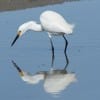 By Jim stevenson
By Jim stevenson
I’m well into the Alaska trip so the Great Plains/Rockies birds will start very soon. Today is the conclusion of the spring pictures from Texas, with some interesting (I hope!) waterbirds. The seven Alaska travelers are just terrific and we are having (so far) a trip for the ages. Can’t wait to send pictures! And do you remember what I sent you from Alaska last July 4th? Get ready!!!
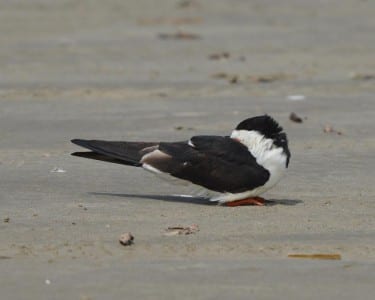
Black Skimmers have a real problem with their head, beak and skull so they tuck them in for balance. They are also partly nocturnal so they tend to catch a few winks during the middle of the day. They are slow to react and have occasionally been tagged by beach traffic. Their population has dropped alarmingly in recent years.
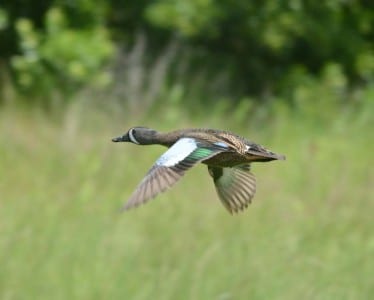
Most of our North American ducks leave our area in spring and the last to depart is the Blue-winged Teal. This drake is showing you that his “blue wing” is actually the front of the wing, but that his speculum is green. They also have an interesting ruptive mark on their face to help them hide in the open.
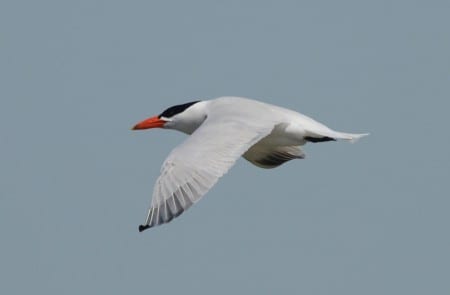
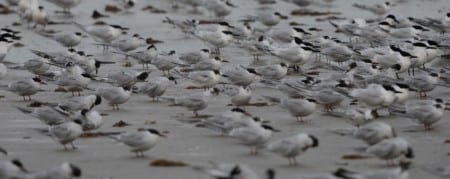
The king of our terns isn’t the Royal, but the Caspian. Its large, red bill is a good field mark but it also has a closely-cropped crest, short tail and tends to feed in inshore waters. Below him is a f lock of Common Terns, an abundant species in late spring. And if you look reeeeeeeally hard you’ll see Sandwich Terns on the right side and left edge of the flock. See how grayish the Common Terns are underneath? Below, we have about 6000 Royal Terns breeding in Galveston Bay, and two are about to add to that number. Note the shaggy crest and thinner bill than Caspian. Below them are two Common Terns, a breeding and winter plumaged bird. Note the red bill and legs of the breeding plumage adult (and grayish underside) and dark carpel bar on the wing of the winter bird.
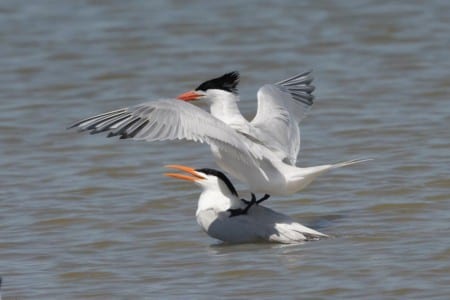
Royal Tern pair above and Common Terns below. Read about them one page up.
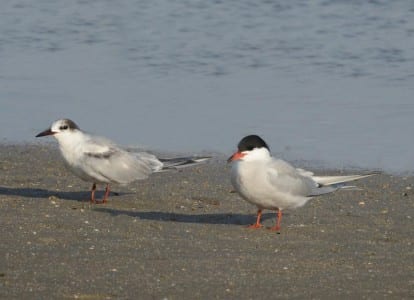
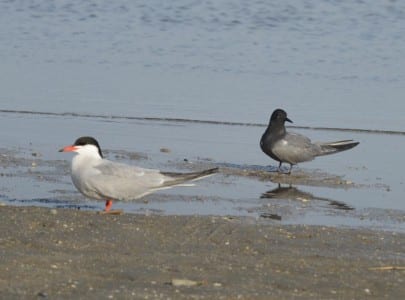
Here are two “summer” terns that migrate through in late spring, being abundant in early May, and then returning again in late summer, like August. The left bird is obviously a Common, as it is medium-sized, gray underneath and has a red bill and legs. The Black Tern is totally unmistakable, like nothing else in our continent.
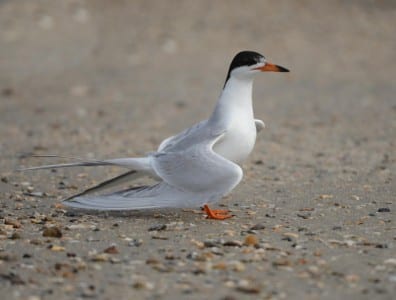
The “loose wing look” is a tern’s way of saying, “Let’s boogey.” Curiously, this Forster’s Tern hasn’t gained his full black cap and is still trying to pick up chicks. Notice it has an orange bill, not the red of the Common. Forster’s also has a long tail, giving this bird quite the sleek appearance. They nest in much of our salt marsh area.
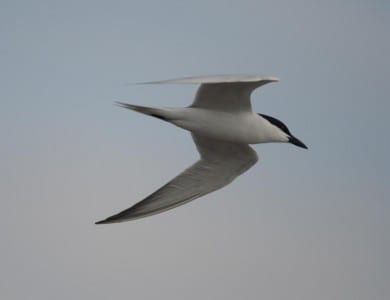
Gull-billed Terns are not uncommon but easily overlooked amidst all the Sandwich Terns, with their invisible yellow bill-tips. They tend to be back on the bay side of the Island, feeding over dry marsh and salt marsh. Curiously, they nest on the open beaches. Below are three Common Terns on the right and a chance to compare them with the winter Forester’s Tern in front of the Royal on the left. Common: Winter carpel bar!
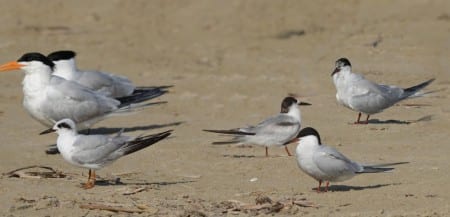
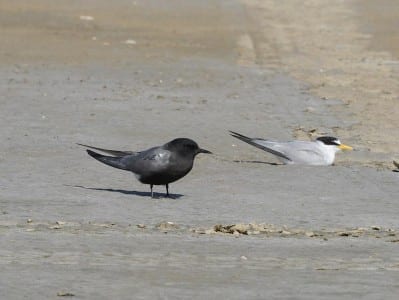
A good way to organize our eight terns to keep them straight is to think of four pairs of them, separated by size. Caspian and Royal are huge (as big as Laughing Gulls), Gullbilled and Sandwich are pretty large, Common and Forster’s are kinda small and these two, Black and Least, are quite small. Least is the only smallish tern with a yellow bill and if you have trouble with Black Terns, I can’t help you. 😉
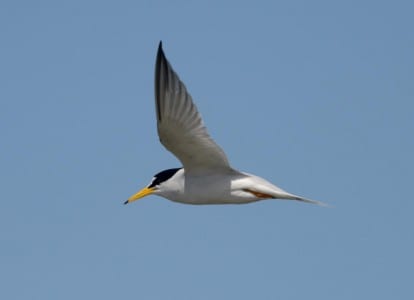
Above is a good view of a hover ing Least Tern, with their oversized bill and wings. Below is a flock of Common Terns, p lus a few Sandwich and Royal Terns, so see if you can figger out which is which. Notice the gray chests on the Commons.
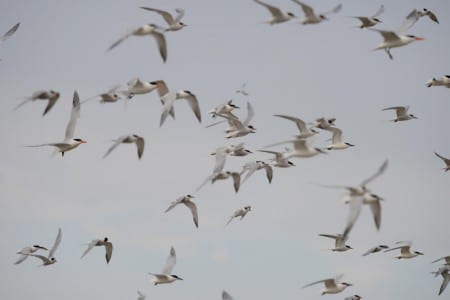
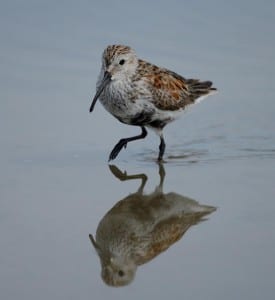
Sandpipers are an amazingly diverse group, ranging in size from sparrow-sized peeps to gargantuan godwits and curlews. They also have some incredible plumage changes into amazingly colorful males and females, but are as bland as lukewarm lakewater in winter. This Dunlin is gaining its breeding plumage, a nice reflection on it.
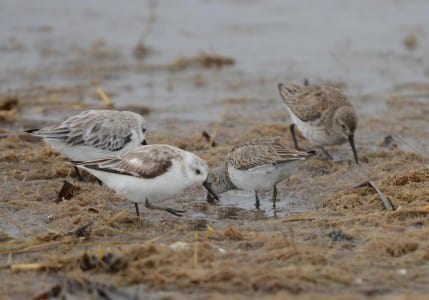
Go ahead and take a look at the Sander lings. Notice the whitish look of their winter plumage. Now go back and look at the bird on the right (a Republican?). Yes, it’s not the same thing! This is a winter Dunlin, the precursor of the bird you just looked at above. Much energy is saved using gray in the off-season, plus they look soooo good once they dress up for their wedding.
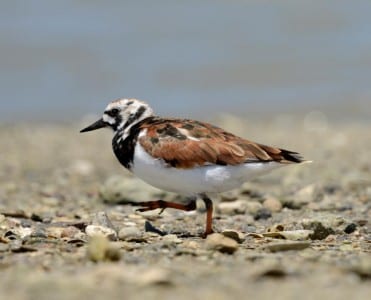
Nobody cleans up better than Ruddy Turnstones. In winter they have two colors, blah and yuk. Then, in late April, shorebirds attain their smart looks and dot the beaches with all kinds of colors and patterns. Note the chisel beak of the turnstone, the heavy, black bib and ruptive marks all over the head. Nice bird, huh?
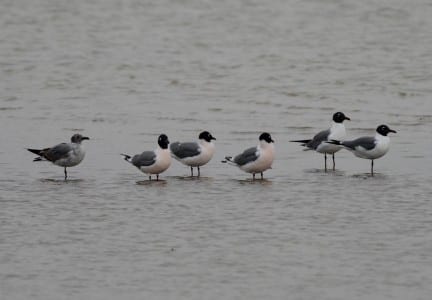
Notice the difference between the three Franklin’s Gulls in the middle and the Laughing Gull on their right and left (left is an immature). Also, a changing Herring Gull below.
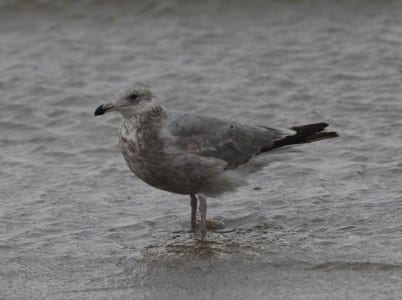
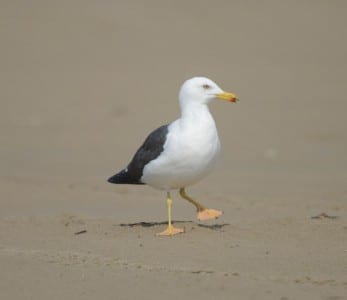
When I was a boy, hardly any birder in the US had ever heard of a Lesser Black-backed Gull, let alone seen one. Now they are rather common, often in flocks of 3-4 at San Luis Pass. They are much smaller than the Great BBG, and even dwarfed by Herring Gulls. Also notice the rounded head, unlike Herring. They have pretty much cleared out till fall.
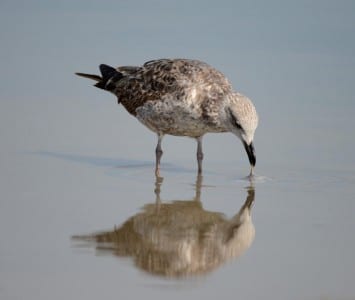
You have to be a little experienced to pick out the young LBBGs, but notice how dark this bird is on the mantle. Also note the black bill and pink legs as a juvenile (yellow on adult one page back). Narcissus here was in a f lock of four and experimenting with a jellyfish. You know, nobody has any idea where they nest in the New World (I’m told).
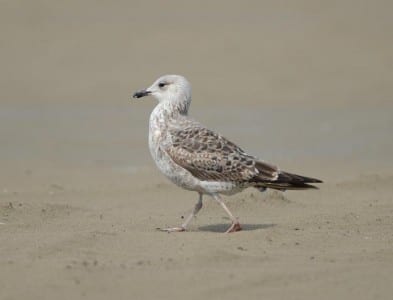
This could easily be passed up for a young Herring Gull but the really dark back feathers indicate the LBBG instead. Also note the smaller-than-Herring rounded head and strong contrast between the top and bottom (dorsum and venter). This species and the Herring form a ring species around the Northern Hemisphere, with one ending (supposedly) where they next one begins. This rare phenomenon was first noticed in the New World with salamanders around the Appalachian Mountains.
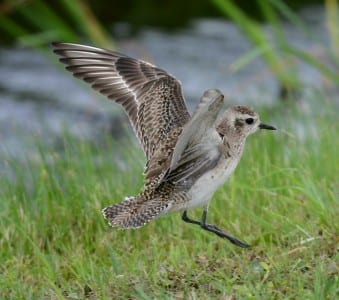
Everyone knows Arctic Terns migrate from the Arctic to the Antarctic (or thereabouts), but who has the second longest migration? You’re looking at it! The Golden Plover (Am) flies from Arctic Alaska to the southern tip of South America, down the Atlantic in fall and up through Texas in spring. They can fly on those long, saber- like wings for days and only stop out over the Atlantic to see if they got a pdf from me.
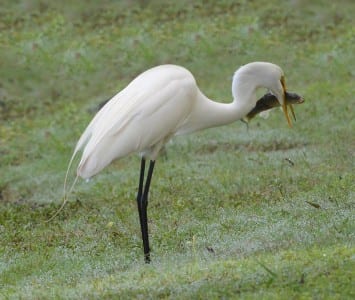
Great Egrets feed on land often, leaving the water for rats, snakes, lizards and such. Here he’s caught a grass bass. joke
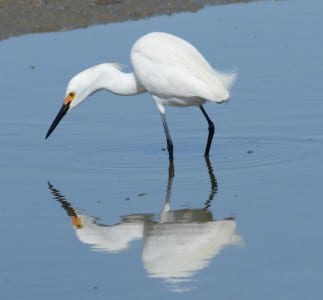
This picture proves that I do occasionally take a decent picture 😉 But seriously, notice the high breeding plumage of this Snowy Egret, which includes ornamental feathers. This species, more than any other, threatened its own existence with these lovely plumes in the early 1900s, when plume hunters were on a rampage. Always remember to thank the Audubon Society for coming to their rescue when these creatures were being sacrif iced for the money made. I am sorry to say that we are want for the same conviction (no pun) when our State Government chooses feral cats over wild birds, and our National Government hardly considers conservation when we struggle with economic issues. Waders escaped extinction three times last century (plumes, swamp draining and pesticides) but one wonders if the current pattern of destruction of songbirds will be thwarted in time to save this wonderful resource.
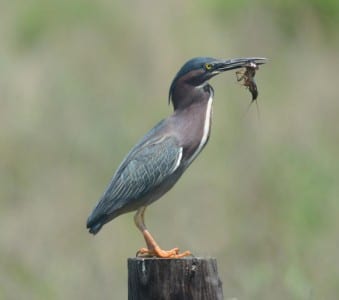
Several species of birds similar to this Green Heron exist around the World and all have clever methods for procuring their prey. This unit poked around in a crayfish hole until it made contact but some are actually tool users. They were documented at the Miami Seaquarium dropping squirrel pellets into the water and nailing fish that came up to investigate. And as a boy, I watched one defecate on the water’s surface, turn around, and grab an unsuspecting fish that came up to investigate. I have often wondered if it might have been a crappie.
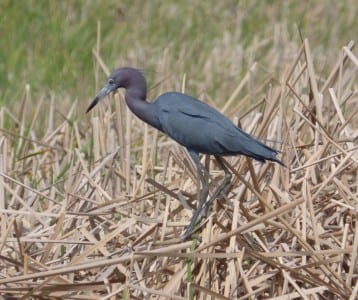
We are all familiar with Little Blue Herons as they range far enough inland that many of you have seen them. They are especially abundant in my home state of Florida, which also used to be their genus name, until they were placed in the same genus with our egrets. The two-toned bill allows them a tough point for fishing but causes them to resemble Reddish Egrets enough to confuse some folks.
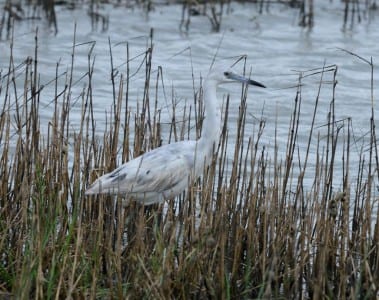
Little Blue Herons are white as juveniles and gradually gain their “blue” colors. This “teenager” works a salt marsh, not a common habitat for a predominantly freshwater species. In fact, they almost replace the Tri-colored Heron inland, although I see no similar ity in their foraging styles. I welcome observations (as always).
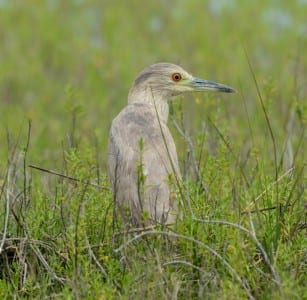
This is a juvenile Black-crowned Night-heron, but one with worn, washed-out feathers. I have only witnessed this in Herring Gull juvies and have no explanation for this bird, as I have not seen it in herons. The yellow on the juvenile’s bill is the best indicator of a black-crown, and this bird may actually be attaining a bit of the black on the mantle.
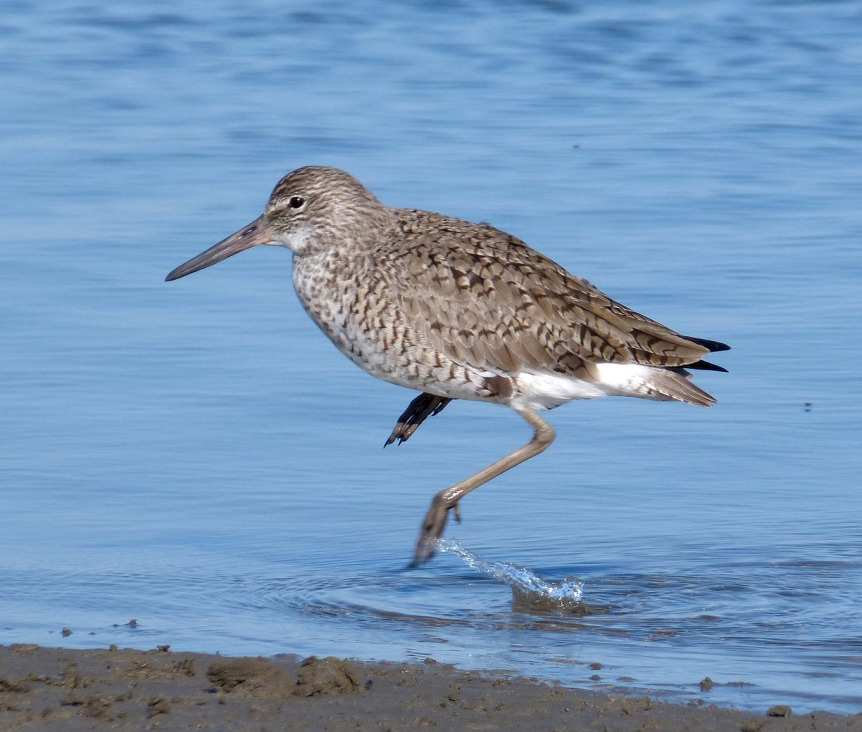
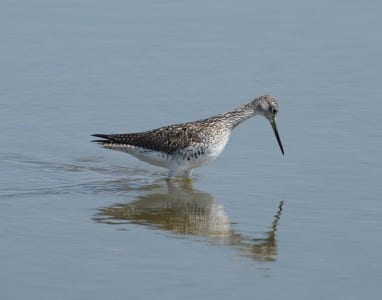
Somewhat smaller than a Willet is the Greater Yellowlegs, a common winter resident along the Gulf Coast. Notice the bill is at least twice as long as the head, and they also have a loud, ringing call. One would think their smaller counterpart would inhabit a similar niche but actually, it’s very different.
It is not unusual to see more than one Lesser Yellowlegs together (unlike Greaters) and they actually migrate in small flocks around the Gulf of Mexico, as circum-Gulf migrants. Sometimes there will be Stilt Sandpipers or Wilson’s Phalaropes in their flocks. Check out the lower picture below.”]
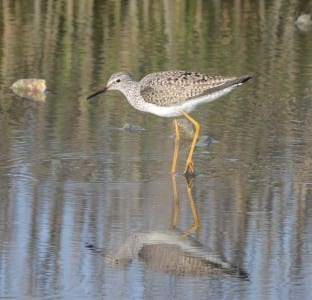
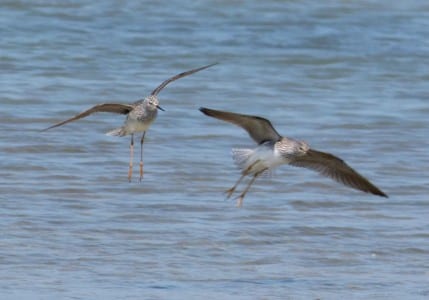
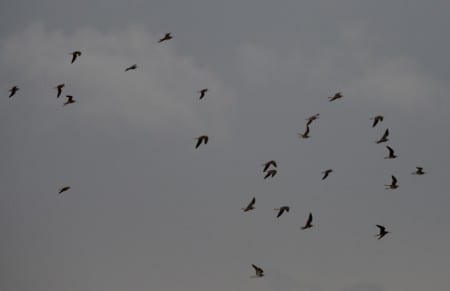
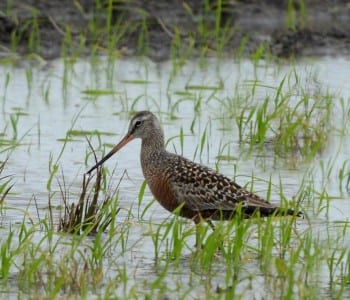
The King of America’s shorebirds is the mighty Hudsonian Godwit, a beautiful, large sandpiper that migrates from Alaska to southern South America. Like the Golden Plover, they fly down the Atlantic in fall (missing Texas) and up through the UTC in spring. They seem to especially like the inland rice f ields and seldom stop right along the coast except in the most brutal weather. I just love Hudwits! 😉
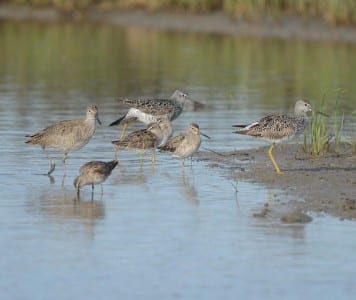
Medium-sized sandpipers can also be confusing! The Western Willet on the left towers over the others, even making two Greater Yellowlegs seem small. The four dowitchers in the middle are probably Long-billed, although a little more breeding plumage would be nice! The left one seems hunchbacked and the right one may show a bit of barring. But I wouldn’t bet the mortgage on it. IDing dowitchers by voice is way easier!
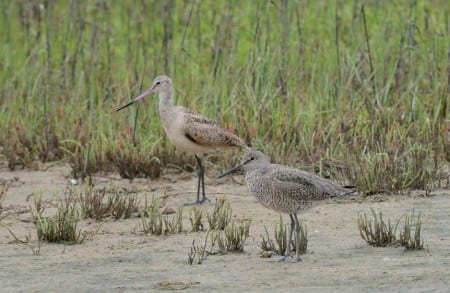
While Western Willets are long and slim, being rather godwit-like, this Eastern Willet is pretty squatty compared to a real (Marbled) Godwit (behind). Easterns nest all over the bay side of the Island as they are salt marsh dwellers. They love fiddler crabs, but the wintering Western race, which inhabits the beaches, doesn’t seem to have the same affinity for them. I’ll be seeing them very soon in the Great Salt Lake.
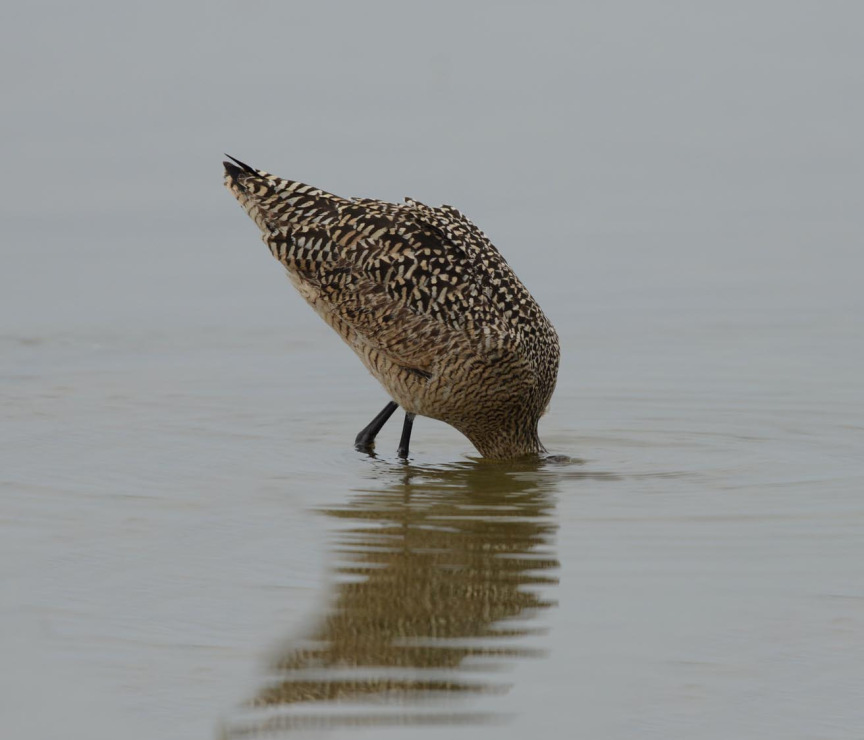
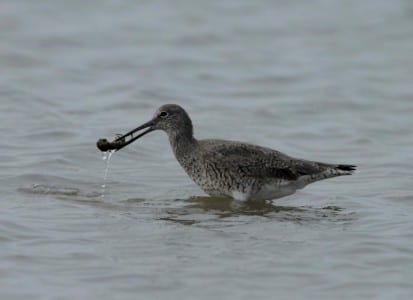
Western Willets mostly feed in the shallows along the coast, and this one has pulled up a Stripe-clawed Hermit Crab living in a gastropod shell. I wish it better luck than I had (while teaching marine biology) at coaxing the crab from the shell. This race of Willet (perhaps a different species?) is here in the South from around Labor Day through May.
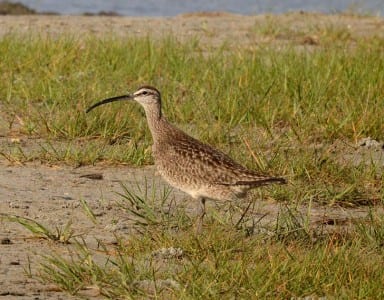
Whimbrels are common on the Texas Coast only in late spring, p robing for fiddler crabs and screaming all over the bay side of Galveston (fall finds them flying down the Atlantic Ocean). You can see the fiddler crab (Uca pugilator) burrows, surrounded by the balls of dirt left by the diggers. These are curlews, of course, and used to be called Hudsonian Curlew. The name Whimbrel was European in origin. Now, the AOU is considering splitting the New and Old World Whimbrels, so the one currently at Bolivar Flays would represent a different species.
I have seen Whimbrels eating small crabs on their tropical wintering grounds, but am at a loss to explain what they eat on the Arctic Tundra. Note the dark stripes over the crown, separating them from Long-billed Curlews.”
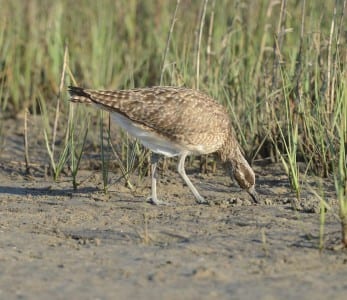
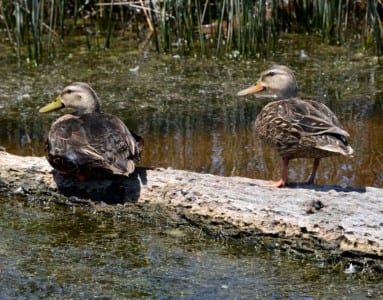
Our only North American duck that nests on the Upper Texas Coast is the Mottled Duck. Males (left) are slightly larger and darker, but the easiest way to sex them is the different colored bills. They are extremely common, conspicuous and tame in the spring around the UTC before appearing to depart in late summer.
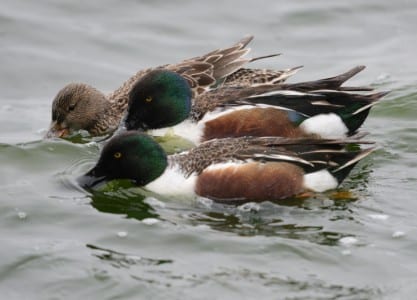
Shovelers also have some of their kind return from the Tropics in mid-spring, usually decked out in the finest breeding garb. They and Ruddy Ducks are our latest ones to attain breeding plumage.
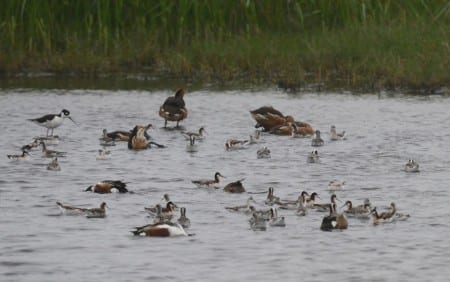
This mixed flock of waterbirds seems to all be plankton eaters. The shovelers in the front and the Fulvous Whistling-ducks in the rear often partake of microscopic food stuffs, as well as the Black-necked Stilts and Wilson’s Phalaropes. You may doubt that plankton could feed very much but remember that whales eat that stuff!
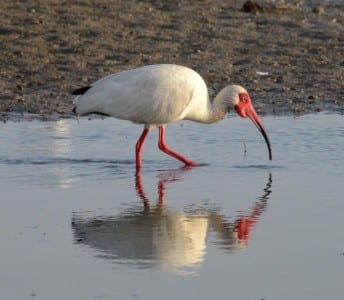
Ibis attain high breeding plumage along with herons and egrets. This White Ibis is like the old joke about the newspaper: black and white and re(a)d all over. Like the curlews, they use their decurved bills to feed and lookout for danger at the same time. These two groups are quite tasty (even to people!) and we nearly exterminated them a century ago. In fact, it appears that with the Eskimo Curlew, we *did.*
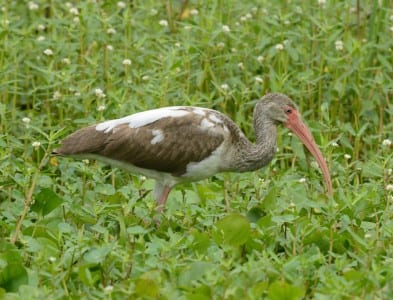
Any bird like a Little Blue Heron that is a totally different color from youth to adulthood must undergo odd changes to attain the eventual plumage. Here is a White Ibis that, like a Ring-billed Gull, has developed its adult-colored back first, while remaining juvenile in other areas (I’m thinking of all the jokes here). As is the case with all of our birds (except Merlins ;), once they attain the adult plumage, they never go back to juvenile colors. Hope all of you are doing well. js

 Posted in
Posted in 
























I love all this great information plus outstanding photos. How do I find other similar columns of yours?
Your “Migration” video was top quality too.